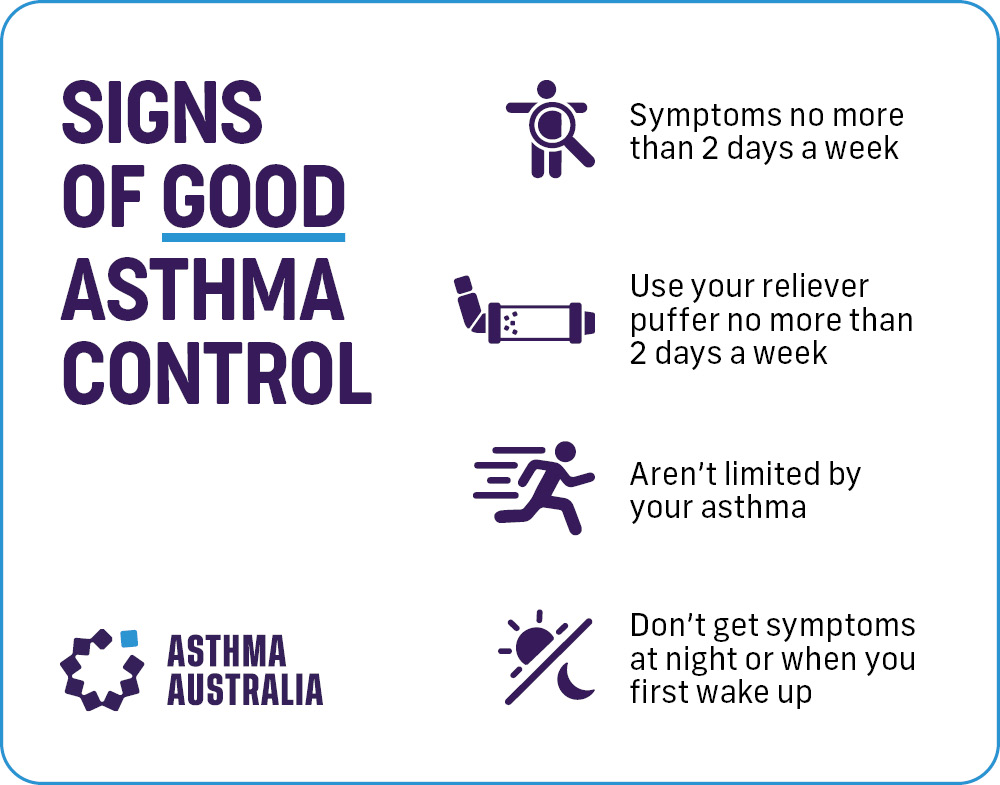Living with asthma
One of the things you must know about asthma is that it is a long-term disease. Asthma is more than the coughing and the wheezing your child experiences. When a child has asthma, it means their airways are more sensitive than they should be – all the time. This means that when they come into contact with an asthma trigger, their airways will react by swelling and squeezing tight. When this happens, they will have asthma symptoms.
Staying away from triggers will help your child’s asthma, but you can’t protect them from everything. It’s impossible to know exactly when they will come in contact with a trigger. There could be cat fur on a friend’s clothes at school. They may sit next to someone wearing strong perfume on the bus. Someone in a house three streets away might decide to have a wood fire. Or the sports oval might get mown at school.
That’s why you need to be aware all year round. Some kids will go months between symptoms. This doesn’t mean they have grown out of their asthma, only that they haven’t come into contact with a trigger for a while.
Check your child’s asthma score
Sometimes, asthma symptoms improve as a child grows and they might go years in between symptoms. It’s important to be aware that it’s still possible for them to have an asthma attack or asthma flare-up, even if they haven’t had symptoms for years. Always be prepared with a blue puffer and spacer, just in case.
|
Key points Asthma is always there, but symptoms and triggers come and go. Most kids don’t “grow out of asthma”. Make sure your child always has a reliever puffer and spacer with them. |
Manage symptoms when they happen – even mild symptoms
The overall aims of asthma treatment are to reduce the risk of flare-ups, make sure asthma does not interfere with sport, play or school attendance, and to minimise the side effects of treatment by using the lowest level of medicine required to maintain good asthma control.
You don’t need to save your child’s medicine for only when it’s ‘really needed’. Use their blue reliever puffer as soon as your child shows asthma symptoms. Treating symptoms early may stop the flare-up getting worse and help you avoid a potential hospital visit.

It’s not good for your child to have symptoms every day. If you find your child needs their blue puffer more than twice a week – it’s time to see their doctor. They might be able to prescribe a preventer to help keep your child’s symptoms in control and need less reliever medicine. If your child is using up more than three whole blue puffers in one year, this is a sign that they are having too many symptoms and relying too much on their reliever.
Preventers are low dose medicines that reduce swelling in the lungs. Because they are such a low dose, they take 2-4 weeks of use to have full effect. Sometimes they can take up to 12 weeks. If your child still has asthma symptoms while taking their preventer, don’t give up on it! Go back to the doctor and let them know, they will work with you to find the right medicine for your child.
Ignoring symptoms until they are very bad means your child is likely to need oral steroids. Oral steroids work very well in an emergency, but having many courses of oral steroids in their life can lead to severe side effects. Seeing a doctor early and using low dose preventers is the best way to avoid this.
|
Key points: Give their blue puffer early – don’t wait until your child “really needs it”. A blue puffer won’t harm your child. If your child needs their blue puffer more than twice a week, it’s time to talk to their doctor. |





